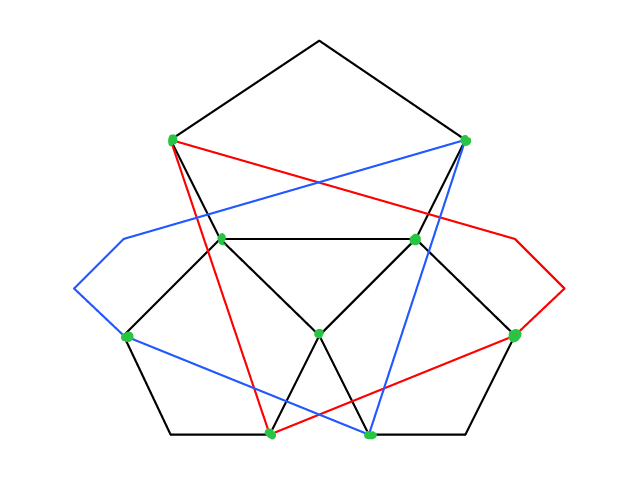Let $k=5$. Then there is a graph $G$ such that:
- $G$ is formed by $5$ cliques of order $5$, with any two cliques sharing at most one point in common.
- $G$ has an induced subgraph $H$ such that every vertex in $H$ has degree at least $5$ in $H$.
So for this example, the Szekeres-Wilf Theorem cannot be used to show that $G$ is $5$-colorable.
Here is the example:
I've drawn five pentagons, three in black, one red, and one blue. Any two pentagons share exactlyat most one point in common. Let $G$ be the graph obtained by filling in the rest of the edges to that the pentagons become cliques of order $5$. Let $H$ be subgraph induced on the nine green vertices. Every vertex in $H$ has degree at least $5$ in $H$.
EDIT: Here is a picture of the induced graph $H$. I think I got all the edges, but there are at least enough to show that every vertex in $H$ has degree at least $5$.


